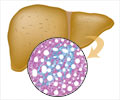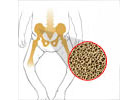Two faculty members at the Saint Louis University School of Medicine has shown that hereditary hemochromatosis is more common than thought and will result in more studies to determine who will develop complications from this debilitating and fatal disease. Their work appears in an editorial in the NEJM that accompanies the research.
“This study gives us important new understanding into hemochromatosis – particularly how complications from the disease are common among men with the genetic predisposition for it,” said Bruce R. Bacon, M.D., James F. King M.D. Endowed Chair in Gastroenterology, professor of internal medicine and director of the division of gastroenterology and hepatology at SLU School of Medicine, and one of the authors of the editorial in the NEJM.“We believe this research will further the search for the factors that determine which people with the genetic markers for hemochromatosis go on to develop this very serious disease,” added Bacon, who in 1996 was part of the team that identified the genetic mutation that causes the disorder.
Robert S. Britton, Ph.D., associate professor of internal medicine at SLU School of Medicine, co-authored the editorial with Bacon.
Hemochromatosis causes the body to absorb up to three times the normal amount of iron. Over the years, the excess iron builds up in the vital organs, joints and tissues, where it can cause a number of debilitating and potentially fatal conditions, including liver and heart disease, diabetes and arthritis. The disease can be difficult to diagnose because its early symptoms can often be attributed to other causes.
The research published today followed more than 31,000 people in Melbourne, Australia, over 12 years. The study was done by Katrina J. Allen, M.D., Ph.D., of the Royal Children’s Hospital in Victoria, Australia, and the University of Melbourne in Australia, along with a more than a dozen other researchers in Australia and the U.S.
The genetic marker for hemochromatosis is a mutation called C282Y. Someone needs to inherit two copies of this defective gene, one from each parent, in order to be susceptible to the disease; when they do, they’re called “C282Y homozygotes.”
Advertisement
However, the research published today found that the proportion was far higher, particularly among men. Among men with the genetic marker for hemochromatosis, 28 percent were found to have the disease. Among females, the proportion was 1 percent.
Advertisement
Bacon and Britton note that in clinical practice, testing for the genetic marker for hemochromatosis is recommended for any immediate family member of someone newly diagnosed with the disease.
They conclude: “The study by Allen et al. will spur the search for genetic and environmental factors that determine which C282Y homozygotes accumulate substantial amounts of iron and are at risk for clinically relevant tissue damage.”
Source-Eurekalert
KAV/V











